Horrific Inquiry: CARNIVAL OF SOULS (1962)
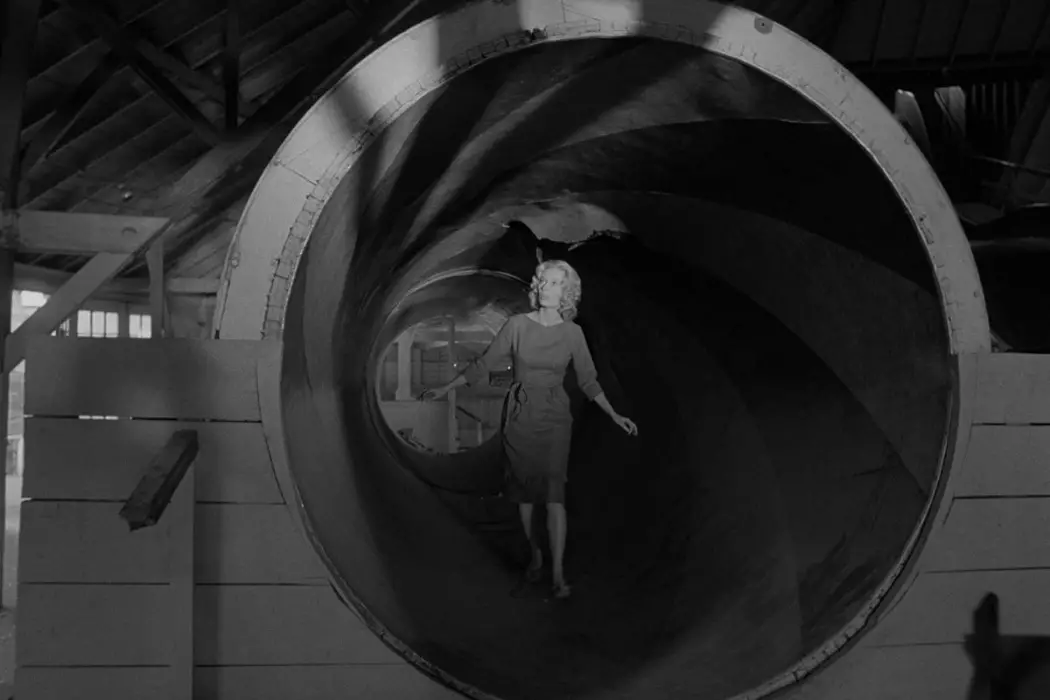
Stephanie Archer is 39 year old film fanatic living in…
Welcome back to the scariest, and at times goriest, column here at Film Inquiry: Horrific Inquiry. Twice a month, I will be tackling all things horror, bringing two films back into the spotlight to terrify and frighten once more. And occasionally looking at those that could have pushed the envelope further. Join us as we dive deep into the heart of horror, but warning, there will be spoilers.
“It’s funny– the world is so different in the daylight. In the dark, your fantasies get so out of hand. But in the daylight everything falls back into place again.” – Mary Henry, Carnival of Souls (1962)
Does anyone just have a film call to them? You can’t explain why but you just have to see that particular film? I recently experienced this after stumbling on an article about the best streaming movies on Amazon Prime for the month of July. I was on the hunt for a summer-esque film to visit for this column, craving something new to satisfy the horrific palette when down the list I came across Herk Harvey‘s Carnival of Souls. I had heard of the film once or twice before in text but had little recollection of its premise. Yet, there was something that drew me to the film. Its doe-eyed protagonist maybe, or even the idea of carnival. Whatever it was, I do not regret it.
Carnival of Souls is an unexpected delight, its slow pace culminating in a climactic revelation of truth. And while years since its release have lent it some predictability, Carnival of Souls retains your attention, demanding that you discover the reality at hand. Carnival of Souls maintains its eerie essence in both character and nature, giving hysteria and mystery to trauma, blending its own rich unique nature with hints of horror classics such as Psycho and The Cabinet of Dr. Caligari. Whether you are looking for a way to beat the heat or a new film to cherish, Carnival of Souls should be your next cinematic adventure.
A Soulful Carnival of Trauma and Grief
From the very beginning, Carnival of Souls is unique in its direction. There are no initial opening credits that ease us into the film, and no character introductions either. Rather, Carnival of Souls launches right into the heart of the film’s catalyst of action. Two cars side by side, boys vs girls, in a high-speed chase that ends with one of the cars flying off a bridge and into the treacherous waters below.
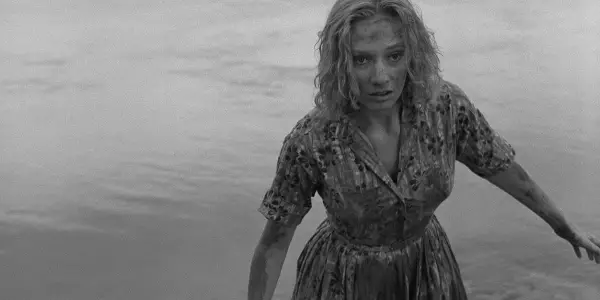
As the car disappears, the boys exit their vehicle to search for survivors and survey the wreck, the screen transitioning to a close-up on the water below, silent and uninterrupted. While not initially obvious, this monetary lapse of sound becomes a common denominator throughout the film. As the water becomes broken by various sticks and shorelines, the opening credits begin. Once again, the film defines itself as unique, the credits presented not as a crawl or a series of central title cards over the running water. Instead, each credit listing is giving its own reveal, lopsided and angular – some of the names even weaving. It is not only unique but a quiet means of setting the tone Carnival of Souls has in store.
As the film progresses ahead to three hours later, the towns folk have arrived at the scene. As they watch a haphazard attempt to find the car conducted below, resident and first responder alike resolve to the fact that the car may never be found. With high water levels and the river carrying large amounts of sand and mud, hope is quickly relinquished. There is an emptiness that seems to exist in the town, neither grief nor shock exhibited as they conduct their search or look on, rather a stagnant sense of reality. But thankfully, hope is not lost, Mary Henry (Candace Hilligoss) emerges on one of the sandy islands. Yet, how she managed to survive – “I don’t remember”.
On and off from the very beginning, the sound of church organs fills the screen, creating a sense of the edge of madness. Where one would expect the music to pick up, matching the hope of survival, it leaves viewers with a sense of foreboding. As Mary Henry looks over the bridge the next morning, her demeanor matches that of the town, the swell of the church organ transitioning her to being the source of the sound of madness. As her playing seems to hypnotize and ease those around her, it is short-lived. As viewers discover, she is leaving immediately for a job she had accepted before the accident.
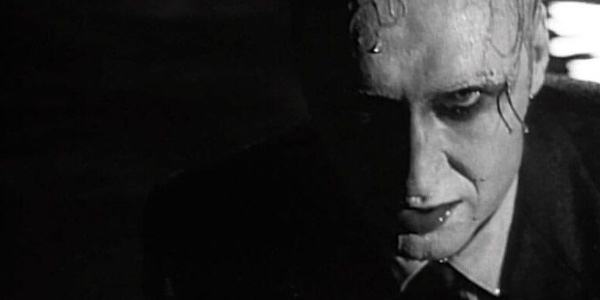
As she leaves there is a sense that she is still living in a state of shock, detaching herself from both the trauma of where the accident occurred and those who might have the ability to reach her. As she announces her plans to never return, Carnival of Souls gives the first early indications of a lasting trauma on Mary Henry. And while we as viewers may be understanding given the events that have just come to pass, the towns folk seems less inclined. After she leaves, two men criticize her emotional reaction to the traumatic accident, expressing their surprise she is not displaying more gratitude or humbleness. These harsh criticisms, a reality or reception many women have experienced throughout the ages, become a form of backhanded support, the men succumbing to admissions that maybe that’s what it takes to survive and they might be in the same state if it had been them.
It is interesting to see Carnival of Souls take a moment to allow this scene to unfold. One, it establishes her refusal to tackle her trauma head-on, leaving the window open for it to come raging back unexpectedly. But the film could have easily moved on without this scene, her dialogue effectively establishing the sense of running away moments earlier. Rather, this scene further establishes who she is as a person – “always kept to herself” and acknowledging that she was acting strangely. Yet, where these are baseline reasons for inclusion, it’s the fact that not only is she criticized, the film turns those critiques on those who have delivered them.
There is the sense that director Herk Harvey and writer John Clifford understand the societal perspectives on both women and grief, as well as the weight of survivor’s guilt. They understand how others expect the traumatized to act, both grateful for survival and gracious acceptance of the platitudes of others. By having the men turn their criticisms on themselves, it opens a conversation of trauma and its various means of taking shape in individuals. And as they speak their judgments on Mary Henry, it further puts themselves and the town under the same microscope. As they expected more humble and devastating behavior from Mary, the same could be said for the reaction of the town. Where they perceive that Mary Henry is acting strangely, the same could be said to them all.
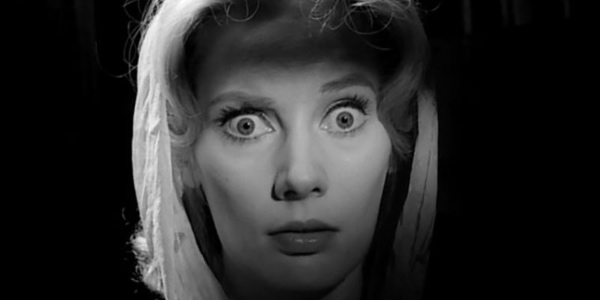
As Mary Henry drives away, there is the faintest feeling of Alfred Hitchc*ck’s Psycho, both Mary, and Marion escaping in the shadow of the night. Yet, where Marion’s paranoia grew from the fear of being caught, Mary’s begins to develop in her unresolved trauma growing just below the surface. Viewers are not restricted to a forward-facing view of Mary Henry driving the car, allowing the camera to take in various angles, creating and capturing reflections in the passenger window – originally Mary’s, then the eerie face of a man with darkened eyes (Henrey Herk). As her paranoia grows, her reflection returning to that of her own, she looks ahead to see the man standing in the middle of the road.
Carnival of Souls is not afraid to let the idea of trauma manifest. From this point, the unrealized existence of trauma will ebb and flow throughout, finding strength in the darkness, but leaching out into the daylight. Because as suppressed as that trauma is, it will always find its way to the surface – including the truth. As Mary Henry’s hysteria slowly begins to bubble, most of her manifestations of trauma have been limited to reflections – the truth looking back at her. But as time continues to pass, it begins to take shape in a psychical, and even tactile, form.
In the synopsis for the film, it states that after a loss, Mary Henry becomes obsessed with a local carnival. And after watching the film, that entire synopsis does not hold water. I wouldn’t say that Mary becomes obsessed with the Carnival but rather haunted by it. Mary Henry finds herself drawn to the carnival, its presence and seemingly stronghold on her preventing Mary from ever leaving the town – at least not until the truth is known. While the events lend themselves to a realized form of purgatory, the carnival becomes a boat of the underworld, the man with the darkened eyes and the carnival’s inhabitants guided to the underworld. It is here that Carnival of Souls transcends the classic idea of horror, almost embracing the Greek mythology surrounding Hades, the boat driver to the underworld Charon and the guardian of souls Kerberos.
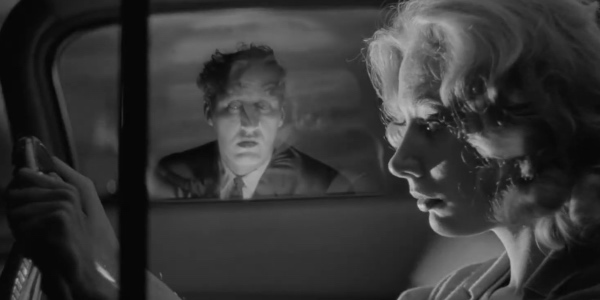
Yet, it is not just mythology that “the man” represents, taking a strong hold on the trauma that continues to break through the surface. He appears in the shadows of the night and even when just taking a sip of water. But like her trauma, “the man” pops up when least expected and is a terrifying reality to face. And as much as “the man” represents her trauma, he also is a harbinger of the truth. A truth viewers may figure out long before the film has ended.
The Truth
I think there is little debate that Carnival of Souls could have been a big inspiration for M. Night Shyamalan‘s The Sixth Sense. There are undeniable similarities at their core and in their shocking endings, yet still unique all the same. For Carnival of Souls, the question of who is haunting whom begins to really take shape as Mary Henry is trying on dresses at a local shop. Returning to the dressing room to change back into her clothes, a wave ripples through the picture, the diegetic sounds of the shop leaching into silence. As Mary Henry walks out of the room, viewers can hear her speak, but no one else can – their voices and the environment plunged into complete silence. As Mary exits the shop, the sound is still gone, even from the construction just down the street. It is not until the sound of a little bird penetrates the silence does the world return to normal.
It is here I began to question whether Mary Henry had actually survived the crash. As she runs into Dr. Samuels (Stan Levitt) after a brief fright at the water fountain, she begins to tell the doctor “it was as though for a time I didn’t exist. As though I had no place in the world”. There was a continuity in her words and the experience she had just had that gave weight to my suspicions yet leaned heavily into the trauma of survivor’s guilt. Seeing how Mary Henry was interacting with others, the trauma of survivor’s guilt seemed to be more likely.
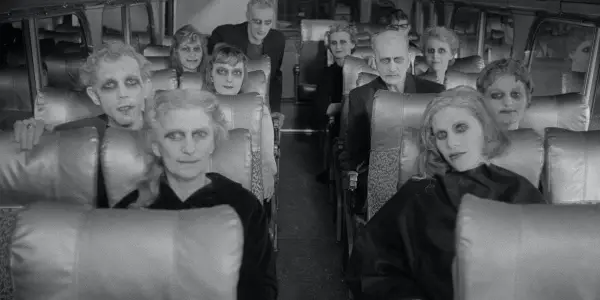
Yet, as the film progresses, and Mary’s hysteria and paranoia grow, her need for attachment increases as well. There is the sense of needing human interaction, that without it she will become lost forever. For a character described by those of the town as detached, which has matched much of her behavior thus far, it seemed desperate and urgent. As if at any moment, loss of any human connection would be a permanent loss of self.
From here the film accelerates into madness, Mary Henry fighting the truth the carnival of souls seems so desperate to make her understand. That she does not in fact belong here, as she states to Dr. Samuel later on, and that she needs to address the “imagination” head-on. Her imagination here is her trauma and the reality surrounding it. As Mary tries once more to run from the truth, her world is once more plunged into silence, the entire town unable to hear her and unable to help her escape. There is only the truth, the terrible reality that she never survived the crash.
Conclusion
The ending of Carnival of Souls is incredibly captivating, delivering a solid climatic finish. And while it will leave viewers with a slew of questions in its wake, it is a film you will find yourself wanting to talk about. From the layers of trauma to the shocking twist ending, Carnival of Souls is a classic cinematic experience best shared with others.
Have you seen Carnival of Souls? What did you think? Let us know in the comments below!
Watch Carnival of Souls
Does content like this matter to you?
Become a Member and support film journalism. Unlock access to all of Film Inquiry`s great articles. Join a community of like-minded readers who are passionate about cinema - get access to our private members Network, give back to independent filmmakers, and more.













